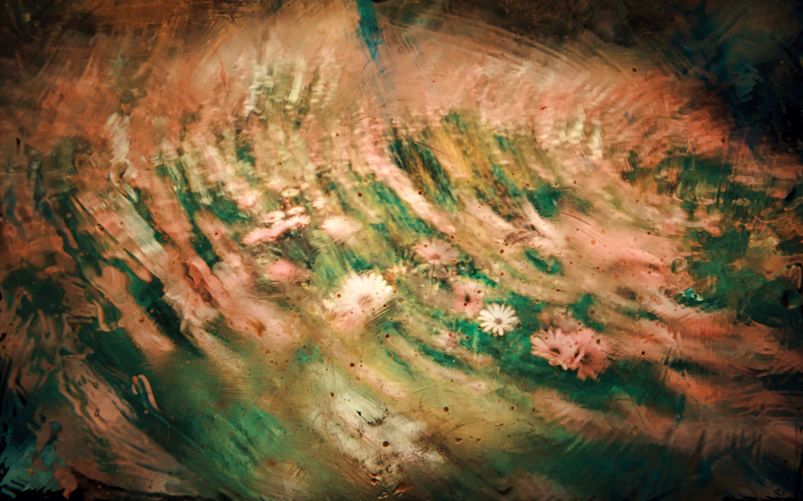A strong sense of the place, a memorable, relatable character, a journey of initiation we are eager to follow – are the markings of retellable Romanian fairy tales.
Romanian folk tales are filled with active characters involved in amazing journeys. Perhaps an influence of the millennial transhumance and of a local history forged in battles, seen through the Romanian metaphysical view on religion, what better way to explain the connection between the sacred and the profane but through stories?
Romanian folklore sees the sacred and the profane as two parts that, united, create this world. Thus the journey the main character of a mythical story or a folk tales follows is seen as a bridge connecting the two, a way of communication, of connecting the sacred with the profane. But at the same time this journey, by reaching the sacred, allows the character to achieve a higher level of knowledge and understanding of the world he lives in, the profane.

Going back to my Romanian roots I read my childhood’s fairytales with one though in my mind. That the material read influences not only the style and the form, but also the thoughts and the ideas behind one’s work (and actions). By observing various characters from Romanian fairy tales I drew a mind map of the various journeys of initiation, with examples.
The journey of initiation as depicted in Romanian fairy tales
1. The quest of finding one’s fate, even going to the netherworld
Youth without Age and Life without Death, Tinerete Fara de Batranete si Viata Fara de Moarte, is the story of a young prince who goes in search of that what was promised to him before he was born, a youthful state of life that lasts forever. During his adventure he discovers a land far away, where time passes at a different pace. Surprisingly this fairy tale does not have a happy ending.
The journey of finding what was promised, of finding one’s fate, or the journey to the underworld often includes a forbidden place, a room or an object that has the power to suddenly undo the happiness found. The world that the main character left behind, ruled by normal time, is different than the new world he discovered. Often, there is no exact border between the two. While time cannot physically affect them in the world they discovered at the end of their quest of initiation, we must remember that the main character was born in a world guided by normal time and therefore time can still affect him psychologically (they becomes homesick).

2. The journey of finding a beloved that went (suddenly) missing or of leaving a beloved behind in order to find something lost
The Enchanted Pig, Porcul cel Fermecat, is the story of the youngest princess (of three), the one who marries a pig because that was her fate. Following wrong advice, one night she gets rid of the pig’s skin and this throws her into her journey. Turns out the pig skin was only spell put over a handsome prince that now she must search for all over the world, “until she will wear out three pairs of iron shoes and a steel staff”in order to undo the spell and find happiness again.
Often in Romanian fairy tales a character appears to have a different shape, wear an animal skin that is suddenly lost due to the main character’s mistrust.
The transformation that the secondary charter goes through, often from that of an animal to a human appearance, can represent the hero’s confusion, his or hers lack of experience in dealing with intimate relationships.
It is the journey of initiation the hero must take (in this case of finding something lost, the animal skin) that will eventually allow him/ her to mature enough so that on his / her return a relationship can be pursued.
During this type of journey the character can be forced to leave the loved one behind due to a mistake. The journey he is about to undertake will help solve the problems, or redeem the sin that was committed and was the catalyst of he journey.
On the other hand, the hero that undergoes such a journey shows exceptional qualities, as anyone else showing less class would not have been able to undergo such a quest.
The loved one that is left behind or must be found, often waiting in anguish, is not having happier days either until the hero’s victory.

3. The trip to solve a problem, fix a wrong doing, or of proving oneself
Ileana Simziana or The Princess Who Would be a Prince tells the story of three princesses who try to prove themselves in the eyes of their elderly father, the king. It is the youngest one who emerges victorious from the different quests she has to undergo.
Through the journey the hero finds himself on a higher level, gaining the experience needed to live in a world he knew nothing about at the beginning of the story. Often it is the youngest one or the smallest one (of three brothers of sisters) who emerges victorious.
The journey also allows the main character to finally perceive the reality just the way it is, without the initial pink cloud of an ideology based on the ignorance of youth or of a sheltered existence.
In other occasions this journey of initiation starts out of indifference to the place of birth or because the character is banished.

4. The ride of humility, of forgiveness or of teaching a lesson
Junior the Brave and the Golden Apples, Praslea cel Voinic si Merele de Aur tells us the story of how the youngest son of an emperor who goes to find and punish the intruder who would steal the golden apples from the king’s orchard. During the quest he discovers the cunning jealousy of his older brothers as well as a monster with great powers. Luckily, a beautiful fairy comes to his rescue.
Often, a hero found high on the social scale has to undergo a journey of initiation that will force him or her to leave below the social standard received through birth, thus learning a valuable lesson on self-sufficiency, humility and compassion.

5. The voyage as a pretext that will lead to lessons learned or other journeys.
Emperor Aleodor, Aleodor Imparat, is the story of an emperor’s son who accidentally passes the border to a forbidden land, that of Half-man-riding-on-the-worse-half-of-a-lame-rabbit. To redeem himself he has to undergo a series of tasks. He doesn’t mind proving his innocence and escaping the beast, but the outcome is not what he bargained for – still a happy ending.
The initial journey is often an every day activity, such as a stroll, hunt, or a trade. The result, on the other hand, is that of the main character meeting a fairy, a witch, a spirit, a beast, entering a forbidden space or having a terrible dream that will later lead to him pursuing more adventures.
Although it begins as an involuntary activity, this journey of initiation proves that the spiritual and the sacred surpass the godless and the worldly side of life.
The journey of initiation will often allow the character access to the sacred. In Romanian folklore, life consists of seen and the unseen combined, much like the world we live in, crated by God as a unity.
The journey of initiation allows the character to travel between the two worlds, the seen and the unseen. These worlds, although different, are governed by the same moral laws. What differ is often the way the physical body interacts and reacts, often to the passing of the time.

The journey of initiation in Romanian fairy tales and its connection with time
One other element connected with the journey of initiation is the time that seems removed from the normal timeline of the character’s everyday life. No matter where the character arrives, in a magical valley, over seven mountains and seven seas, in an enchanting kingdom, time passes different.
In Romanian folk culture there are various sacred tradition throughout the year, connected with the seasons, with observing of various saints, with agriculture or human life stages and each tradition is preceded by a series of customs. These customs have to be performed in a certain order, at a certain time. By doing so we mark the sacred time in the year that we celebrate.
Through the prism of the the end result – the finding of what “rightfully” belonged to the main character, the braking of the spell, the removing of the obstacle, the knowledge and experience gathered – the journey of initiation is similar to the traditions of the Romanian folk culture, marking a sacred time in the life of the character, the time he spent in his quest.
The character fought to obtain something and by doing so he gained access to a sacred time in a different land, away from the time frame and the borders of the era and the country where he was born.
By traveling to a far way, enchanted land, the main character passed not only a border between worlds, but he traveled in time, not in the past or the future, but in a parallel time, governed by different laws. There is often little difference between the two worlds and there is no visible border either, the exact moment of passing is often unnoticed. Only by observing the various rules that govern the two world can we tell them apart.
The journey of initiation in Romanian fairy tales is extraordinary and it often spans over the entire length of the folktale. But is this journey mesmerizing though the various tasks the hero goes through and the challenges he faces or because he finally gains that much needed knowledge and sees the life and the world around him for what it actually is?
Life is a journey of initiation in itself and it is in how we address its problems and on how we emerge from its various challenges that makes it retellable and relatable, much like fairy-tales.



A fascinating post, Patricia. Nice to learn more about Romanian fairytales.
Thank you, Roberta!
I think reading a fairy tale is like looking through a kaleidoscope. Each time we do (n matter the age) we discover something else to learn or marvel over 🙂
I appreciate you stopping by 🙂
Great post Patricia and I agree with you “Each time we do (in matter the age) we discover something else to learn or marvel over”
Oh, glad to hear that, Paulo.
Thank you for reading and commenting 🙂
How interesting to read about Romanian fairy tales. What rich stories, so full of meaning and things to explore.
Very much so, Priscilla. I’m not sure how much of these meanings I caught on when I was a child 🙂 but I surely enjoy them now – especially if I look at my own life through their perspective.
Thank you for your lovely comment 🙂